Sensor Sweep: LoTR at 20, Manga, The Northman
Monday , 27, December 2021 Sensor Sweep Leave a commentScience Fiction (Cryptofictional Records Wing): This trend started out in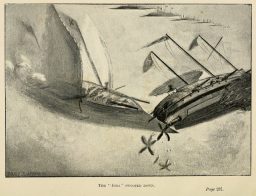 1871 with Sir George Chesney’s “The Battle of Dorking”, a novella in which England is invaded by a fictional (but German-speaking) country assisted by some form of secret technology. Due to this story’s popularity with readers, other British invasion thrillers soon followed. However, while these stories usually featured traditional war campaigns in their narratives, in 1893 aspiring writer George Griffith (George Chetwynd Griffith-Jones) began incorporating more elaborately-drawn futuristic weaponry and vehicles into his fantastical war epics.
1871 with Sir George Chesney’s “The Battle of Dorking”, a novella in which England is invaded by a fictional (but German-speaking) country assisted by some form of secret technology. Due to this story’s popularity with readers, other British invasion thrillers soon followed. However, while these stories usually featured traditional war campaigns in their narratives, in 1893 aspiring writer George Griffith (George Chetwynd Griffith-Jones) began incorporating more elaborately-drawn futuristic weaponry and vehicles into his fantastical war epics.
Cinema (The Guardian): Even for those of us forewarned of Peter Jackson’s bold three-film adaptation strategy, however, the limbo in which the first instalment left us was disorienting and exhilarating, like being woken abruptly from a still-escalating dream. Twenty years on, to a Generation Marvel audience, that shock might be hard to understand.
Review (DMR Books): The latest issue of Cirsova Magazine was published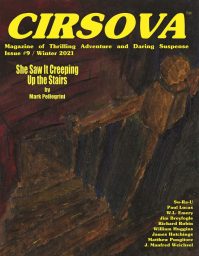 (in England) on the 15th December. Here is a full review of the stories in the issue. It’s a long review because there are a lot of stories to cover. If you want a shorter review, I would just say “Great stories, buy it.” But if you want the luxury tour, it’s all here in black and white.
(in England) on the 15th December. Here is a full review of the stories in the issue. It’s a long review because there are a lot of stories to cover. If you want a shorter review, I would just say “Great stories, buy it.” But if you want the luxury tour, it’s all here in black and white.
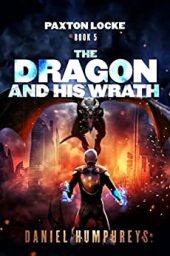 Review (With Both Hands): This is the third time I’ve read The Dragon and His Wrath [Silver Empire affiliate link], and I’m happy to report that it is a cracking good read every time. I’m a great lover of the kind of book where evil gets its due, and Humphreys does not disappoint here.
Review (With Both Hands): This is the third time I’ve read The Dragon and His Wrath [Silver Empire affiliate link], and I’m happy to report that it is a cracking good read every time. I’m a great lover of the kind of book where evil gets its due, and Humphreys does not disappoint here.
Manga (Bounding Into Comics): ScreenRant’s poor attempt to disparage the Japanese storytelling medium, written by site comic book news editor and manga jr. lead Evan Mullicane, hit the outlet’s front page on December 19th bearing the condescending – and frankly insulting – headline “Manga Has Always Been Political, Western Readers Just Never Realized it.”
Authors (Goodman Games): Yesterday was the 93rd anniversary of the birth of Sterling E. Lanier. He wasn’t just a favorite author of E. Gary Gygax, nor was he merely a cited influence on both the Dungeons & Dragons and Gamma World role playing games. For those things alone he would still be notable and of interest to role playing gamers everywhere. Sterling E. Lanier was the quintessential polymath.
birth of Sterling E. Lanier. He wasn’t just a favorite author of E. Gary Gygax, nor was he merely a cited influence on both the Dungeons & Dragons and Gamma World role playing games. For those things alone he would still be notable and of interest to role playing gamers everywhere. Sterling E. Lanier was the quintessential polymath.
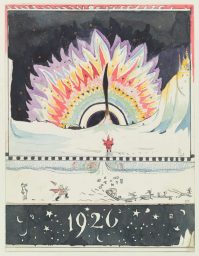 Tolkien (Open Culture): Every year, Tolkien’s Father Christmas had a great deal to report to John, Michael, and later Christopher and Priscilla. Apart from the usual hassle of assembling and delivering gifts, he had to contend with a host of other challenges including but not limited to attacks by marauding goblins and the accidental destruction of the moon.
Tolkien (Open Culture): Every year, Tolkien’s Father Christmas had a great deal to report to John, Michael, and later Christopher and Priscilla. Apart from the usual hassle of assembling and delivering gifts, he had to contend with a host of other challenges including but not limited to attacks by marauding goblins and the accidental destruction of the moon.
D&D (Playing at the World): When Dave Arneson’s lawsuit against TSR was nearing a trial date at the end of 1980, his legal team recruited an expert witness in the person of Jon Freeman. Freeman, who wrote for Games magazine and had recently produced The Complete Guide to Board Games, was a longstanding D&D fan who drove one of the earliest computer adaptations of dungeon-crawling to see a commercial release: The Temple of Apshai (1979), first of the “Dunjonquest” series.
D&D (Prince of Nothing): The legendary S3. If the GD(Q) series can be seen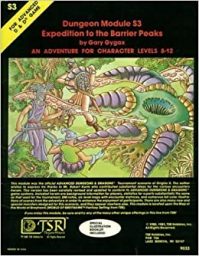 as a roadmap for ‘normal’ high level adventures as T1 can be seen as a normal low-level adventure, the S series is where Gygax gets wacky and more experimental, and few things in the original catalogue are stronger and more experimental then Expedition to the Barrier Peaks. Bryce’s favorite module, selected nr. #5 of the Best Modules of All Time, its list of accreditations stretches on and on like the waters of the Congo.
as a roadmap for ‘normal’ high level adventures as T1 can be seen as a normal low-level adventure, the S series is where Gygax gets wacky and more experimental, and few things in the original catalogue are stronger and more experimental then Expedition to the Barrier Peaks. Bryce’s favorite module, selected nr. #5 of the Best Modules of All Time, its list of accreditations stretches on and on like the waters of the Congo.
 Fantasy (DMR Books): It strikes that there is a lot left to be done in the field of sword-and-sorcery studies. To paraphrase the poignant lament of Roy Batty, I don’t want to see these bits of sword-and-sorcery history lost forever, though I fear they could be. The S&S boom of the mid-’60s through the ‘80s was something unique, a moment in time that we can’t recapture. And one that is fading into yesteryear, even as new venues and authors seek to carry on the old traditions and take S&S in new directions.
Fantasy (DMR Books): It strikes that there is a lot left to be done in the field of sword-and-sorcery studies. To paraphrase the poignant lament of Roy Batty, I don’t want to see these bits of sword-and-sorcery history lost forever, though I fear they could be. The S&S boom of the mid-’60s through the ‘80s was something unique, a moment in time that we can’t recapture. And one that is fading into yesteryear, even as new venues and authors seek to carry on the old traditions and take S&S in new directions.
Cinema (Den of Geek): A lone rider on horseback; a child’s oath of vengeance upon the sight of a beheaded parent; a burly, statuesque, and shirtless he-man swinging a sword into battle while lit only by the glow of wildfire. All of these things could be used to describe the joy of ‘80s beefcake action movies, a la Conan: The Barbarian (1982) or The Beastmaster (1982). But such images are given new and startling life in the first trailer for Robert Eggers’ The Northman.
vengeance upon the sight of a beheaded parent; a burly, statuesque, and shirtless he-man swinging a sword into battle while lit only by the glow of wildfire. All of these things could be used to describe the joy of ‘80s beefcake action movies, a la Conan: The Barbarian (1982) or The Beastmaster (1982). But such images are given new and startling life in the first trailer for Robert Eggers’ The Northman.
Science Fiction (Scifi Wright): Until today, I was unaware that Isaac Asimov wrote an extensive review of George Orwell’s NINETEEN EIGHTY FOUR, and that the review was negative. This came as rather a surprise to me, since I could not imagine one of the top science fiction authors in America daring to undermine one of the top science fiction authors in Britain, and one who, unlike himself, had broken into the mainstream, won worldwide fame, and was read and discussed by everyone everywhere.
Science Fiction (M Porcius): I’ve been looking through 1935 issues of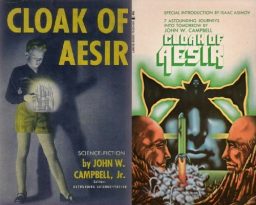 Astounding at the internet archive because I have developed an interest in the drawings of Elliot Dold, Jr. and Mark Marchioni. These issues of Astounding are full of stories by future Astounding editor John W. Campbell, Jr., some under his real name and others under his Don A. Stuart pseudonym. Let’s check out three Don A. Stuart stories, the components of what isfdb calls “The Machine” series.
Astounding at the internet archive because I have developed an interest in the drawings of Elliot Dold, Jr. and Mark Marchioni. These issues of Astounding are full of stories by future Astounding editor John W. Campbell, Jr., some under his real name and others under his Don A. Stuart pseudonym. Let’s check out three Don A. Stuart stories, the components of what isfdb calls “The Machine” series.
Lovecraft (Sentinel Hill Press): The Arkham Gazette, our Journal of all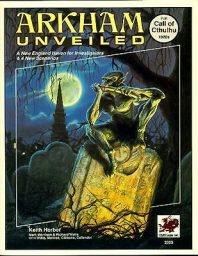 things ‘Miskatonic Country’, expands upon a series of now three-decades-old releases from Chaosium, the Lovecraft Country series of books. While we go into a lot of detail about the books that make up this series in our latest release Miskatonic Country Scenarios: A Keeper’s Guide (BUY IT NOW), I wanted to offer a quick guide here on the Sentinel Hill Press blog dedicated to helping new Keepers who want to dive into Miskatonic Country but are unsure of where to start, focusing on what books are readily available without turning to secondary markets.
things ‘Miskatonic Country’, expands upon a series of now three-decades-old releases from Chaosium, the Lovecraft Country series of books. While we go into a lot of detail about the books that make up this series in our latest release Miskatonic Country Scenarios: A Keeper’s Guide (BUY IT NOW), I wanted to offer a quick guide here on the Sentinel Hill Press blog dedicated to helping new Keepers who want to dive into Miskatonic Country but are unsure of where to start, focusing on what books are readily available without turning to secondary markets.
Fiction (M Porcius): Leigh Brackett, besides selling stories to magazines like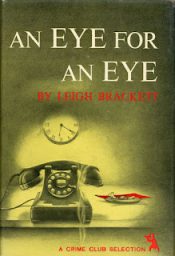 Planet Stories and Thrilling Wonder Stories and writing screenplays for directors like Howard Hawks, also wrote a bunch of crime novels. As a change of pace from the science lectures and engineering extravaganzas of 1930s Astounding and the vampires and alien gods of 1930s Weird Tales, let’s read a 1957 suspense novel by Brackett, An Eye for an Eye.
Planet Stories and Thrilling Wonder Stories and writing screenplays for directors like Howard Hawks, also wrote a bunch of crime novels. As a change of pace from the science lectures and engineering extravaganzas of 1930s Astounding and the vampires and alien gods of 1930s Weird Tales, let’s read a 1957 suspense novel by Brackett, An Eye for an Eye.
Fiction (Glorious Trash): The cover of this paperback is confusing: “The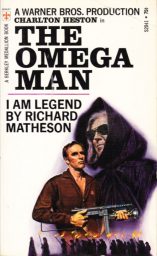 Omega Man” gets predominance, with “I Am Legend” secondary. This would give the impression that the book is titled “The Omega Man,” tying in with the film, however “I Am Legend” is on the spine and inside the book itself. I thought this was interesting because usually it seems that the orginal title is given priority. At the very least this must confuse online booksellers when they’re listing the book.
Omega Man” gets predominance, with “I Am Legend” secondary. This would give the impression that the book is titled “The Omega Man,” tying in with the film, however “I Am Legend” is on the spine and inside the book itself. I thought this was interesting because usually it seems that the orginal title is given priority. At the very least this must confuse online booksellers when they’re listing the book.
History (Frontier Partisans): This third and final installment covers FRB’s sojourn in the Yukon during the Klondike Gold Rush of 1898-99, his services as Chief of Scouts to Lord Roberts in the Anglo-Boer War of 1899-1902 and his efforts to create an agricultural colony in the Yaqui River valley in Sonora Mexico from 1905.
Writing (Pulp Rev): Most English-speaking readers would be familiar with Western portrayals of martial arts. In movies, television, games and prose, fight scenes are the cornerstone of Western fiction. One commonality I’ve noticed in most Western fight scenes I’ve seen is that they are portrayed as exchanges of force. Every fight scene is presented as a contest of strength and willpower, of one fighter seeking to dominate the other, ratcheting up the excitement and energy with every blow.
Reading (Mens Pulp Mags): In addition to reading old men’s adventure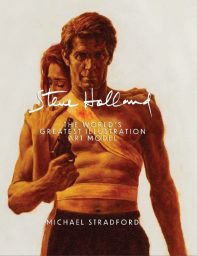 mags, I generally read at least a couple of books every week. Here are some I’ve read in recent months that I highly recommend…
mags, I generally read at least a couple of books every week. Here are some I’ve read in recent months that I highly recommend…
Cinema (Tom McNulty): Just in time for Christmas! Twelve classic Randolph Scott westerns in Blu-ray. These have all been released before but this is the first time all twelve have been included in a  box set. The key is to watch for a good price on Amazon.
box set. The key is to watch for a good price on Amazon.
The twelve films included are:
Cinema (Unz): Gangster movies, like war films and Westerns, are not simply a part of the American cinematic tradition, but a component in the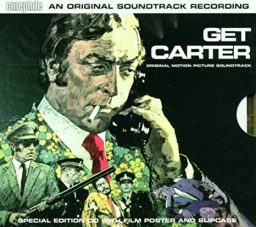 collective psyche of its people. The well-dressed gentleman rogue who sees violence as a necessary part of business, and business as essentially a family or quasi-familial operation, is iconic. Crime, business, and family (or surrogate family) are intertwined. Cosa nostra means “our thing.” So, what makes a good gangster movie?
collective psyche of its people. The well-dressed gentleman rogue who sees violence as a necessary part of business, and business as essentially a family or quasi-familial operation, is iconic. Crime, business, and family (or surrogate family) are intertwined. Cosa nostra means “our thing.” So, what makes a good gangster movie?
Lovecraft (Tentaculii): I’ve been pleased to discover a new and previously unknown story by Lovecraft’s friend and fellow writer Everett McNeil. I wrote the book on McNeil and his career in fiction and movie writing, and I never found a hint of “A Descendant of the Vikings” (written circa 1906, as it was announced then, and published 12th December 1907 in The Youth’s Companion).
Pulps (Yellowed Perils): here’s no single date for when the pulps actually died, but April 8, 1949, was certainly the date that their eventual demise became official.
As I wrote in “The Day the Pulps Died,” that was the date that Street & Smith Publications announced that it was canceling its line of pulp magazines, as well as its comic books.
Firearms (Frontier Partisans): n the 1750s, the vast majority of people on the frontier, white or Indian, carried a smoothbore military musket, a fowling piece, or a trade gun. The rifle culture started gaining momentum in Pennsylvania, Virginia and the Carolina backcountry right in this period — in New England it wouldn’t catch on until after the Revolution. New France was not a rifle culture, and Indians who ambushed Braddock traded mostly with the French.
the frontier, white or Indian, carried a smoothbore military musket, a fowling piece, or a trade gun. The rifle culture started gaining momentum in Pennsylvania, Virginia and the Carolina backcountry right in this period — in New England it wouldn’t catch on until after the Revolution. New France was not a rifle culture, and Indians who ambushed Braddock traded mostly with the French.
Please give us your valuable comment